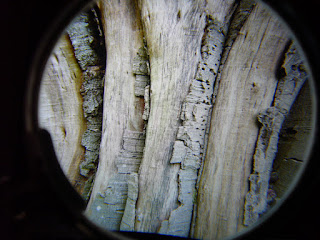Between May 2016 and March 2018 Caroline Wright and I engaged in a collaborative project exploring the position and experience of ‘insider’ and ‘outsider’, taking the Skirrid Mountain, Monmouthshire as the site of investigation. A full account can be seen on a-n The Artists Information Company, detailing all those who supported and were involved in the project. This blog gives some of my own process and artworks.
One body of work developed out of a series of photographs taken on a walk Caroline and I took on the Skirrid. I had recently been experimenting with drawing on slide transparencies, and started to try this in relation to the Skirrid walk.
These were further developed for exhibition at Oriel Davies and ArcadeCardiff.
Click here to see the full slideshow.
Click here to see the full slideshow
Caroline and I had planned to incorporate found objects in our project, but we discovered none on the Skirrid. It has been protected by the National Trust since 1939, and has not experienced social, agricultural and industrial influences in the way surrounding areas have.
I found myself re-walking familiar areas to me (Llangattock Escarpment and Craig y Cilau) but changing my routes to make sure I could keep the Skirrid to the East in view. Looking at all I saw from an east/west perspective, and thinking all the time about what being an insider or an outside might mean, I experienced this familiar terrain in new ways.
On these walks I found plenty of objects: a strange corrugated iron hutch, a birthday balloon, fossils, a trap, bits of industrial and agricultural metal, cats eyes flipped to the side of the road.
Reflecting on the lack of objects on the Skirrid led to ideas of re-populating it with these objects – investing it with something of the social, industrial, natural exchanges that it has been protected from. I thought of the old stories of people taking soil from the holy mountain of the Skirrid in order to sprinkle it in significant places – a garden, a grave. I felt the Skirrid was somehow sacred to our project, as the chosen place, and that the areas I was walking were profane in this context as well as being seen so in the old story. Caroline and I had taken tiny soil samples at key points on our Skirrid walk: perhaps I would sprinkle my soil samples in the places these objects were found: in ArcadeCardiff I combined found objects, soil and images of the mountain.


Meanwhile, I revisited the Skirrid, wondering about the difference of experiencing it together with and apart from Caroline. I found myself circumnavigating the mountain, taking photos and sketching. Back in the studio, I thought about how once more I’d taken the long view - looking in at the mountain rather than out from it - a different perspective to the experience Caroline had shared. I tried to convey something of this different relationship to and perception of the Skirrid in oil paint on gleaned cats eyes. Viewed through a range of magnifying devices mounted in found metal objects from areas outside the Skirrid boundary.
Click here to see more of the paintings with the viewing devices
The theme of resilience underpinned the project. The need to be resiliant can feel like a new tyranny, but in this project helped us think how place, systems, objects, a community and an artist are affected by and respond to change and challenge. My thinking and artworks was influenced by contacts with and conversations with all those involved with the collaboration, but also by systemic psychotherapeutic concepts of positioning and Merlau Ponty's Phenomenology of Perception.

























